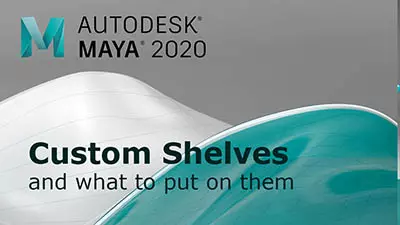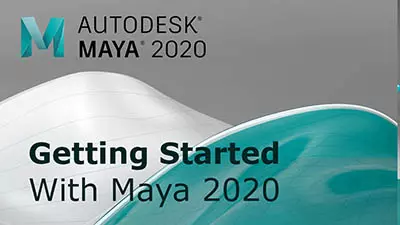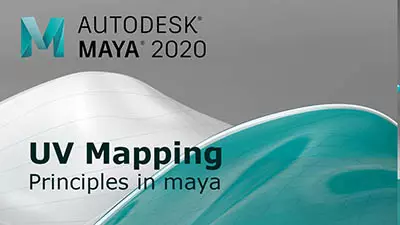Introduction to Maya - Modeling Fundamentals Vol 2
This course will look in the fundamentals of modeling in Maya with an emphasis on creating good topology. It's aimed at people that have some modeling experience in Maya but are having trouble with
complex objects.
#
1
18-05-2014
, 07:31 PM
Registered User
Join Date: May 2014
Join Date: May 2014
Posts: 30
How can I snap a vertex to where two edges intersect?
#
2
18-05-2014
, 09:11 PM
Also if you want to place a vertex you can use the split polygon tool and place it where you need it then press enter.

2 x Modeling Challenge Winner
Last edited by jsprogg; 18-05-2014 at 10:07 PM.
#
3
18-05-2014
, 10:15 PM
Registered User
Join Date: May 2014
Join Date: May 2014
Posts: 30
I have snap to curve on. I select my vertex and go into the move tool. I hold down the the C key and middle mouse drag the move handle. Is that what I'm supposed to do? It's not working. Thanks.
edit: or is there a way to make split polygon tool snap to where the edges intersect?
Last edited by madwh; 18-05-2014 at 10:18 PM.
#
4
18-05-2014
, 10:25 PM
Are you simply trying to combine those two shapes into a single piece of geometry?
"If I have seen further it is by standing on the shoulders of giants." Sir Isaac Newton, 1675
#
5
18-05-2014
, 10:27 PM
Registered User
Join Date: May 2014
Join Date: May 2014
Posts: 30
Last edited by ctbram; 18-05-2014 at 10:34 PM.
#
6
18-05-2014
, 10:35 PM
Now you want to cut the top and bottom face of the bottom and top books (for what purpose I do not know.
But in the process you will create 4 triangles on the bottom and top face of the top and bottom books or eight new 3-sided polygons where you originally had only two 4-sided polygons and create bad geometry for the rest of the object unless you carry the cut edges all the way around the combined geometry. Fixing the geometry from teh whole new object and carrying the edges you cut all through the part will actually add a lot more then the 8 triangles on just the top and bottom faces in question.
Not to mention you also create a new problem for yourself when you go to texture these books because now they are combined and one is twisted and the bottom and top faces of the them are now combined in an odd way.
So what are you hoping to accomplish by doing this? You are not going to save polycon and you are only going to make texturing more difficult?
I mean it's not hard to combine them and I can show you how but in the end I see no real purpose in it other them clutter the geometry, add more polys, complicate texturing, and burn time better spent other other tasks.
"If I have seen further it is by standing on the shoulders of giants." Sir Isaac Newton, 1675
Last edited by ctbram; 18-05-2014 at 10:41 PM.
#
7
18-05-2014
, 10:44 PM
Registered User
Join Date: May 2014
Join Date: May 2014
Posts: 30
edit: ok I think I kinda realized what you're saying and I want consistency, I want the texture of the book on top to be the same res/detail as the one on the bottom.
Last edited by madwh; 18-05-2014 at 10:49 PM.
#
8
18-05-2014
, 10:46 PM
Imaging what would happen later if you wanted to add a third book or change the angle the two books are on top of each other or have a character pick one book up. You could not do the last one, and you'd have to remodel your combined book stack for every other change.
Better to model all the books as separate objects.
"If I have seen further it is by standing on the shoulders of giants." Sir Isaac Newton, 1675
Last edited by ctbram; 19-05-2014 at 05:57 AM.
#
9
18-05-2014
, 10:49 PM
Registered User
Join Date: May 2014
Join Date: May 2014
Posts: 30
#
10
18-05-2014
, 10:51 PM
When they teach not to overlap textures they mean on a single object or within a single texture map. Your books are two separate objects that will just happen to be on top of each other in a scene. You can either create independent texture maps for each, put all the textures on a single map and just scale and move each books uv's or even create unique maps for each book outside the 0-1 space (this is a bit more advanced).
"If I have seen further it is by standing on the shoulders of giants." Sir Isaac Newton, 1675
Last edited by ctbram; 19-05-2014 at 06:02 AM.
#
11
18-05-2014
, 10:59 PM
Registered User
Join Date: May 2014
Join Date: May 2014
Posts: 30
edit: well my instructor just deletes the faces on the bottom of a mouse or keyboard or anything that's not visible. I guess it depends on what it's for: just a render, game, animation.
Last edited by madwh; 18-05-2014 at 11:04 PM.
#
12
19-05-2014
, 01:21 AM
The snap to curve will work and the two object don't have to be combined, what you are most likely doing wrong is when selecting the move tool you are probably selecting an axis instead of the center and free movement.Still wouldn't mind figuring out how to snap/create a vertex where two edges intersect though.
This is not the best way to get two objects on top of each other though, the easier way would be to move the top objects pivot point to the bottom (hit insert key select y axis on pivot and hold v key and MMB drag over bottom vertex of the top object and then hit insert key to complete or less accurate but quicker hold down d and manually position pivot) then in object mode select the top object and hold v key and MMB drag to a top vertex on the bottom object.

2 x Modeling Challenge Winner
Last edited by jsprogg; 19-05-2014 at 02:30 AM.
#
13
20-05-2014
, 05:32 AM
Registered User
Join Date: May 2014
Join Date: May 2014
Posts: 30
That's exactly what I do for that part but I still can't snap a vertex to where two edges intersect and according to my instructor today it's not possible. No idea.This is not the best way to get two objects on top of each other though, the easier way would be to move the top objects pivot point to the bottom (hit insert key select y axis on pivot and hold v key and MMB drag over bottom vertex of the top object and then hit insert key to complete or less accurate but quicker hold down d and manually position pivot) then in object mode select the top object and hold v key and MMB drag to a top vertex on the bottom object.
#
14
20-05-2014
, 08:15 AM

Avatar Challenge Winner 2010
#
15
20-05-2014
, 03:57 PM
Registered User
Join Date: May 2014
Join Date: May 2014
Posts: 30
Posting Rules Forum Rules
Similar Threads
Merge Vertex Across Edges
by rageon75 in forum Maya Basics & Newbie Lounge replies 2 on 05-08-2015
constrained axis vertex snap
by skramer8e in forum Maya Basics & Newbie Lounge replies 3 on 15-01-2015
Snap and merge vertex with edge
by Hypernova in forum Maya Modeling replies 3 on 30-12-2012
UV map and snap edges
by bullet1968 in forum Maya Basics & Newbie Lounge replies 10 on 17-04-2010
Real quick question . Vertex and edges.
by nick@koeppen.net in forum Maya Basics & Newbie Lounge replies 2 on 29-06-2009
Topics
Free Courses
Full Courses
VFX News
How computer animation was used 30 years ago to make a Roger Rabbit short
On 2022-07-18 14:30:13
Sneak peek at Houdini 19.5
On 2022-07-18 14:17:59
VFX Breakdown The Man Who Fell To Earth
On 2022-07-15 13:14:36
Resident Evil - Teaser Trailer
On 2022-05-13 13:52:25
New cloud modeling nodes for Bifrost
On 2022-05-02 20:24:13
MPC Showreel 2022
On 2022-04-13 16:02:13










